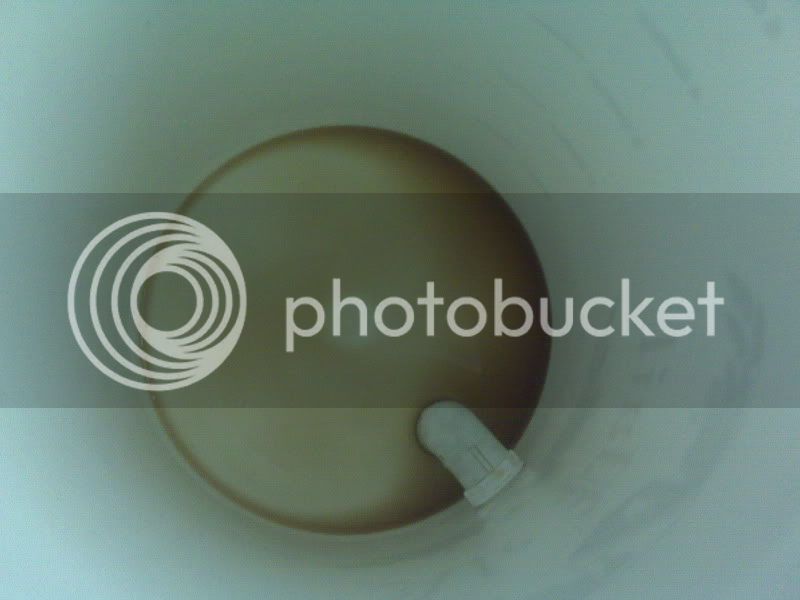As usual revvy is on it with his yoda-like interwebz skills and knowledge.
To add, I would say, especially in the beginning it can be a challenge to get a really clear beer just using a primary.
?????? WHAT?????? The reason many of us opt for long primary is THAT IT MAKES OUR BEER CLEARER EVEN THEN WHEN WE USED A SECONDARY.
Why is that an advanced technique for you, that "it can be a challenge for new brewers to master?" You leave you beer alone...how difficult an advance technique is that? It doesn't require anything more complicated then
doing absolutely nothing for a month
What part of difficult is that?
The point of a long primary is to AVOID the need for racking to secondary.
If you long primary you will compress the trub and get most of the beer back.
I get little if any sediment in my bottles, simply by opting for a long primary. This is my yeastcake for my Sri Lankin Stout that sat in primary for 5 weeks. Notice how tight the yeast cake is? None of that got racked over to my bottling bucket. And the beer is extremely clear.
That little bit of beer to the right is all of the 5 gallons that DIDN'T get vaccumed off the surface of the tight trub. Note how clear it is, there's little if any floaties in there.
When I put 5 gallons in my fermenter, I tend to get 5 gallons into bottles. The cake itself is like cement, it's about an inch thick and very, very dense, you can't just tilt your bucket and have it fall out. I had to use water pressure to get it to come out.
This is the last little bit of the same beer in the bottling bucket, this is the only sediment that made it though and that was done on purpose, when I rack I always make sure to rub the autosiphon across the bottom of the primary to make sure there's plenty of yeast in suspension to carb the beer, but my bottles are all crystal clear and have little sediment in them.
Half the time I forget to use moss, and you can't tell the difference in clarity.
I get the barest hint of sediment in my bottles....just enough for the yeast to have done the job of carbonating the beer.
And the only filtering my beer gets is through my kidneys.

All arguments about wheter or not it's better aside,
how is that difficult for new brewers to master? One could argue it's more complicated to rack a beer.










